Off-Biennale Budapest: Art Beyond Government Funding?

OFF-Biennale Budapest, April 24-May 31, 2015, 136 venues in Budapest and internationally
OFF-Biennale was the inaugural edition of an art event that mobilized seemingly all of Budapest’s nongovernmental art, semi-art and entirely nonart spaces on both sides of the Danube, to present diverse works by some 200 local and international contemporary artists. Running a month-long marathon of daily exhibition openings and one-time performances in galleries, bars, a hair salon, an electricity factory and numerous outdoor public spaces (April 24 -May 31), the majority of the biennale took place in the Hungarian capital – its contextual home and a city that uniquely merges both socialist and imperial ruin aesthetics – but some sister events were scattered as far as São Paulo and New York.
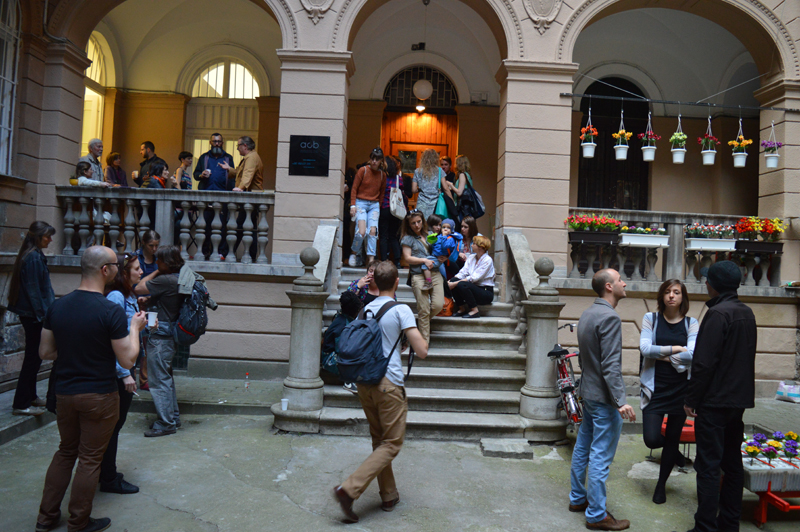
The OFF-Biennale was organized by a team of seven curators, all of whom have been active members of the Hungarian art establishment and whose careers have been displaced by the political changes in Hungary: Tijana Stepanovic, Nikolett Er?ss, Anna Juhász, Hajnalka Somogyi, Borbála Szalai, Katalin Székely, and János Szoboszlai. A sense of political and ethical impasse fostered the off-governmental funding position of the Biennale, from which the name “OFF” derives. In an interview, Stepanovic remarked: “The Hungarian cultural sector has been completely dependent on the government. This is not sustainable. You are dependent on a source that has become abusive. For rational, survival reasons, we wanted to create a space where people can breathe and create.”
The Czech-born philosopher Vilém Flusser, who fled from the Nazis in 1940, narrated the overcoming of marginalized isolation as progressive stages of loss, irony and ethical engagement, which eventually lead to a sense of place.(Flusser, Vilem (2003) “We need a philosophy of emigration,” in The Freedom of the Migrant: Objections to Nationalism, trans. Kenneth Kronenberg, ed. and intro Anke K. Finger. Urbana: University of Illinois Press, pp. 21-24) In Hungary, the years 2012-2013 witnessed protests of the Hungarian Art Academy and the overwhelming wave of conservative changes to cultural spaces where a burgeoning experimental art had flourished – it was a time of tears and mourning.(ARTMargins Online covered the United for Contemporary Art’s sit-in held in the museum in May 2013 as well as the “obituary-themed” demonstration in front of the Kunsthalle the same year. See https://artmargins.com/index.php/5-interviews/721-hungary-in-focus-forum.) “By the end of 2013 most of the scene was very depressed,” Stepanovic said. “Everyone was frozen and paranoid. OFF is the next scene of this dramaturgy.” The OFF-Biennale curators invested in sustainability and engagement, and were empathetic that OFF-Biennale not be seen as an anti-Biennale. “We are tired of identifying in relation to “them,” said Stepanovic. Thus, OFF-Biennale became the opportunity for the displaced art scene to articulate its own identity and its own sense of place.
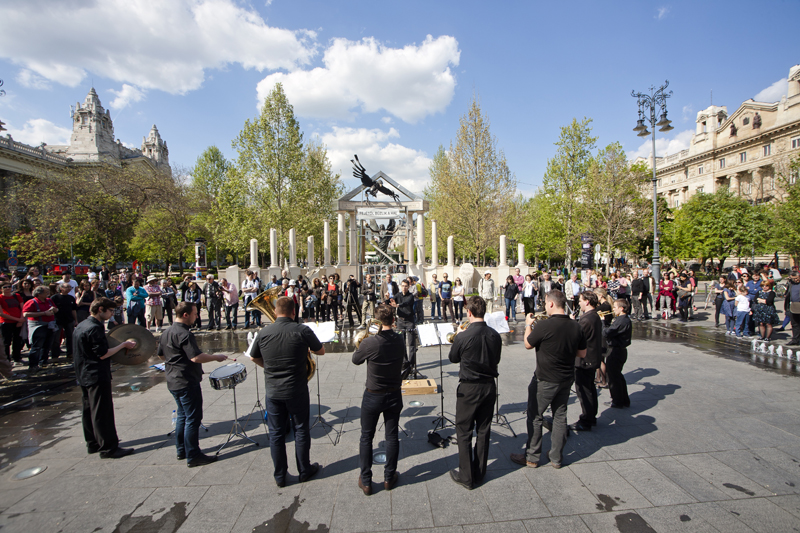
The enactment of a distributary and horizontal organizational structure guided the biennale selection process and a reflection of its ethics. There was no underlying theme to OFF. Instead, the curatorial team invited foreign and local curators and organizations to propose projects that reflected on the local situation. Straipsniai intenetiniame portale straipsniai.org Maistas, reklama, SEO, technologijos, promogos ir t.t. In parallel, the OFF team curated the Check Your Head! series with thirteen artists. About a quarter of the events, forty projects or so, resulted from an open call, which was intentionally issued in Hungarian language only. In each case, project owners were responsible to come up with exhibition venues, and the biennale mushroomed to occupy 136 venues in the city.
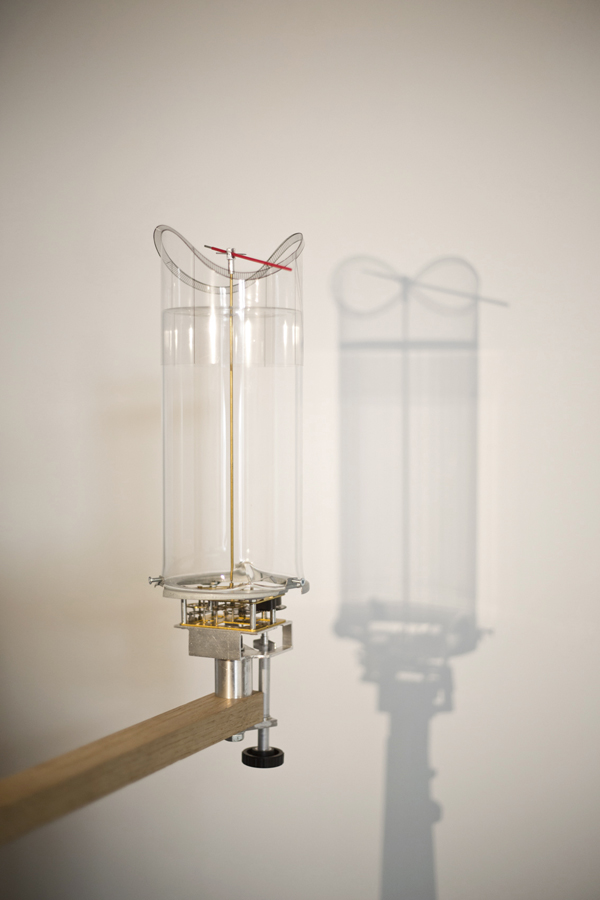 The more successful exhibitions privileged collaboration and a DIY aesthetic. For instance, artist Agnes Eperjesi’s project Words of Power involved convincing members of the Hungarian parliament to read political speeches by foreign prime ministers in the Parliament building in Budapest. Eperjesi also staged a karaoke of these speeches at a local bar. Numerous events were held in front of the contested monument to the German occupation of Hungary on Liberty Square; Universal Anthem by Paris-based cooperative Société Réaliste was a stand out. In Universal Anthem, a nine-piece orchestra performed digitalized versions of the mathematical medium of the scores of the 193 EU Member States’ national anthems, creating a solemn cacophony of sound to a place of nationalistic propaganda. American drag queen Ms. Pepper Pepper collaborated with Hungarian drag queen Sissy Strapon to make Fierce in Eastern Europe, a spectacular, absurd performance and video, shown in Ankert, a famous Budapest ruin pub. The large-scale exhibition Isolator occupied an ex-post palace, and was self-organized by a group of mid-career artists intentionally without curatorial oversight. This type of performative work and the spirit of collaboration tended to overshadow exhibitions with quieter object-based works, such as Attila Csörgi’s Clock-work, a fragile and minimal set of objects that reflected on the concept of time through form.
The more successful exhibitions privileged collaboration and a DIY aesthetic. For instance, artist Agnes Eperjesi’s project Words of Power involved convincing members of the Hungarian parliament to read political speeches by foreign prime ministers in the Parliament building in Budapest. Eperjesi also staged a karaoke of these speeches at a local bar. Numerous events were held in front of the contested monument to the German occupation of Hungary on Liberty Square; Universal Anthem by Paris-based cooperative Société Réaliste was a stand out. In Universal Anthem, a nine-piece orchestra performed digitalized versions of the mathematical medium of the scores of the 193 EU Member States’ national anthems, creating a solemn cacophony of sound to a place of nationalistic propaganda. American drag queen Ms. Pepper Pepper collaborated with Hungarian drag queen Sissy Strapon to make Fierce in Eastern Europe, a spectacular, absurd performance and video, shown in Ankert, a famous Budapest ruin pub. The large-scale exhibition Isolator occupied an ex-post palace, and was self-organized by a group of mid-career artists intentionally without curatorial oversight. This type of performative work and the spirit of collaboration tended to overshadow exhibitions with quieter object-based works, such as Attila Csörgi’s Clock-work, a fragile and minimal set of objects that reflected on the concept of time through form.
 Despite this hopeful message, there was a sense of ambiguity about the future as a return to the worst possible past. History itself emerged as a leading motif of the biennale. The exhibition Horizontal Standing, in the intimate, abandoned space of curator-artist couple Katalin Simon and Zsolt Vásárhelyi, who have recently moved to Berlin due to the political climate in Hungary, reflected on the current intellectual flight out of Hungary by presenting artists’ narratives of forced and voluntary migration from twentieth-century Europe. Under Viktor Orbán’s Fidesz party policy, Hungary has been engrossed in what is perceived to be a “history war,” a manipulation of history for populist ends. In History Restaged at the Open Society Archives and Polish Institute, the curators Edit Molnár and Lívia Páldi illustrated a methodology of subversion: primarily video-based works, the exhibition showed international artists that use the tools of parody and parafiction to comment on politics.
Despite this hopeful message, there was a sense of ambiguity about the future as a return to the worst possible past. History itself emerged as a leading motif of the biennale. The exhibition Horizontal Standing, in the intimate, abandoned space of curator-artist couple Katalin Simon and Zsolt Vásárhelyi, who have recently moved to Berlin due to the political climate in Hungary, reflected on the current intellectual flight out of Hungary by presenting artists’ narratives of forced and voluntary migration from twentieth-century Europe. Under Viktor Orbán’s Fidesz party policy, Hungary has been engrossed in what is perceived to be a “history war,” a manipulation of history for populist ends. In History Restaged at the Open Society Archives and Polish Institute, the curators Edit Molnár and Lívia Páldi illustrated a methodology of subversion: primarily video-based works, the exhibition showed international artists that use the tools of parody and parafiction to comment on politics.
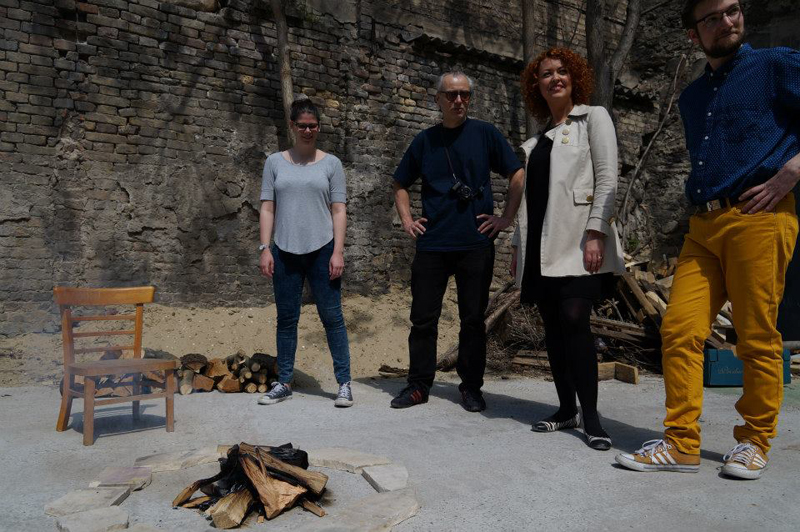 And despite positioning itself as an international event, the Biennale was a deeply insider, DIY-flavored happening that reawakened the dormant beast of the famed Hungarian avant-garde by creating a parallel network to the official ideology. Fashions of the global art world – such as institutional critique – were absent, in favor of engagement with local history and space. At its most radical, the biennale reconstituted the concept of the audience from a museum-goer to a collaborator. The experience of the events was determined by one’s complicity to the message and the ethics, as well as active participation in the making of the events. János Sugár’s piece Fire in the Museum, in which the artist recreated the failed project of a live fire in a museum-space to an outdoor 24/7 campfire installation, became the symbol of the biennale. The bonfire, burning at the back of a popular outdoor pub area, was to be upheld by volunteers throughout the duration of the biennale and became an after-hours destination for the public. However, Fire in the Museum did not make it to the end of the Biennale as the bonfire went out mid-May.
And despite positioning itself as an international event, the Biennale was a deeply insider, DIY-flavored happening that reawakened the dormant beast of the famed Hungarian avant-garde by creating a parallel network to the official ideology. Fashions of the global art world – such as institutional critique – were absent, in favor of engagement with local history and space. At its most radical, the biennale reconstituted the concept of the audience from a museum-goer to a collaborator. The experience of the events was determined by one’s complicity to the message and the ethics, as well as active participation in the making of the events. János Sugár’s piece Fire in the Museum, in which the artist recreated the failed project of a live fire in a museum-space to an outdoor 24/7 campfire installation, became the symbol of the biennale. The bonfire, burning at the back of a popular outdoor pub area, was to be upheld by volunteers throughout the duration of the biennale and became an after-hours destination for the public. However, Fire in the Museum did not make it to the end of the Biennale as the bonfire went out mid-May.
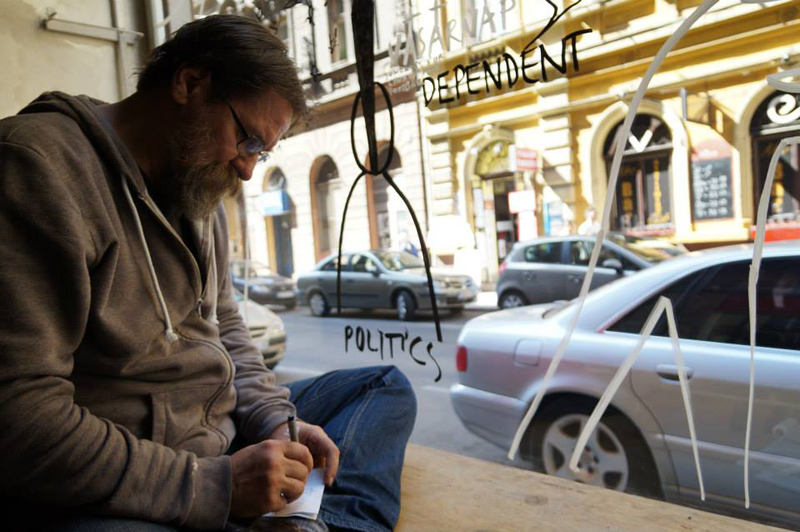 There was a level of risk involved on the part of the OFF curators in assuming responsibility over such an expansive, self-organizing project with no clear direction. Stepanovic describes the “free fall” with which the Biennale unraveled as a condition of “extreme trust.” As opposed to Biennales that “parachute-in” big-name artists for a few days, this daring method allowed for a home-grown network to continue after the last day of the event. “Big name” international artists such as Dan Perjovschi with The Off Drawing and Ulay contributed generously with signature works to a biennale that was not about the big names, and numerous Hungarian cultural practitioners living abroad came for the opening week. Several artists, such as Berlin-based Serbian artist Katarina Ševi?, collaborated on a number of biennale projects at the same time.
There was a level of risk involved on the part of the OFF curators in assuming responsibility over such an expansive, self-organizing project with no clear direction. Stepanovic describes the “free fall” with which the Biennale unraveled as a condition of “extreme trust.” As opposed to Biennales that “parachute-in” big-name artists for a few days, this daring method allowed for a home-grown network to continue after the last day of the event. “Big name” international artists such as Dan Perjovschi with The Off Drawing and Ulay contributed generously with signature works to a biennale that was not about the big names, and numerous Hungarian cultural practitioners living abroad came for the opening week. Several artists, such as Berlin-based Serbian artist Katarina Ševi?, collaborated on a number of biennale projects at the same time.
The response to the biennale had been overwhelmingly positive among local artists and visiting cultural practitioners with whom I had spoken: the spirit of collaboration and shared responsibility had successfully beguiled from the unresolved problem of how to fund the arts. The OFF-Biennale offered no solution to this pending question, but it showed a potential, a generosity and a passion that are the necessary foundation for sustainable future of art beyond government funding.



